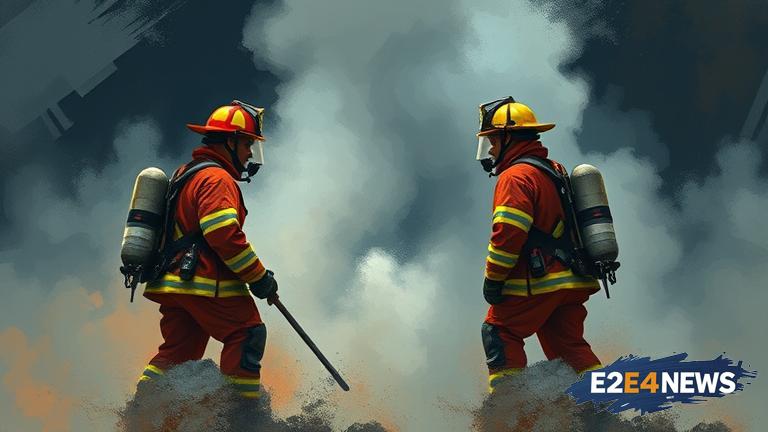The death of a Connecticut firefighter has brought attention to the growing health and safety concerns facing firefighters across the United States. Firefighting is a dangerous profession, and the risks associated with it are not limited to the physical dangers of responding to emergencies. The long-term health effects of firefighting are becoming increasingly apparent, with cancer, post-traumatic stress disorder (PTSD), and cardiac issues being major contributors to the growing epidemic. According to the International Association of Fire Fighters (IAFF), cancer is now the leading cause of death among firefighters, with a significant increase in cancer-related deaths over the past few decades. The IAFF has identified several types of cancer that are more prevalent among firefighters, including testicular cancer, mesothelioma, and non-Hodgkin’s lymphoma. The exact causes of these cancers are still being researched, but it is believed that exposure to toxic chemicals and substances, such as asbestos and benzene, play a significant role. In addition to cancer, firefighters are also at risk of developing PTSD, which can have a significant impact on their mental health and well-being. The traumatic nature of firefighting, combined with the stress and pressure of responding to emergencies, can take a toll on a firefighter’s mental health. Cardiac issues are also a major concern, with firefighters being at risk of heart attacks, strokes, and other cardiovascular problems. The physical demands of firefighting, combined with the stress and pressure of the job, can put a significant strain on the heart. The National Institute for Occupational Safety and Health (NIOSH) has identified several factors that contribute to the health and safety risks faced by firefighters, including exposure to hazardous materials, physical exertion, and stress. The NIOSH has also developed several recommendations for reducing the health and safety risks faced by firefighters, including the use of personal protective equipment (PPE), regular health screenings, and stress management training. Despite these efforts, the health and safety concerns facing firefighters continue to grow, with many firefighters struggling to access the resources and support they need to stay safe and healthy. The Connecticut firefighter’s death is a tragic reminder of the risks associated with firefighting and the need for increased awareness and support for firefighter health and safety. The fire service community is coming together to raise awareness about the health and safety concerns facing firefighters and to advocate for increased resources and support. The IAFF and other fire service organizations are working to develop new policies and procedures for reducing the health and safety risks faced by firefighters, including increased use of PPE, regular health screenings, and stress management training. The US government is also taking steps to address the health and safety concerns facing firefighters, including the passage of the Firefighter Cancer Registry Act, which aims to track and study the incidence of cancer among firefighters. The act also provides funding for research and education on firefighter cancer, as well as support for firefighters who have been diagnosed with cancer. The fire service community is also working to raise awareness about the importance of firefighter health and safety, with many departments and organizations participating in awareness campaigns and events. The goal of these efforts is to reduce the health and safety risks faced by firefighters and to provide them with the resources and support they need to stay safe and healthy. The recent death of the Connecticut firefighter is a tragic reminder of the importance of prioritizing firefighter health and safety, and the need for continued awareness and support. The fire service community will continue to work together to address the health and safety concerns facing firefighters and to provide them with the resources and support they need to stay safe and healthy. The health and safety of firefighters is a critical issue that requires immediate attention and action, and it is essential that we work together to address this growing epidemic. By prioritizing firefighter health and safety, we can reduce the risks associated with firefighting and provide firefighters with the resources and support they need to stay safe and healthy. The fire service community is committed to addressing the health and safety concerns facing firefighters, and we will continue to work together to raise awareness and advocate for increased resources and support.
